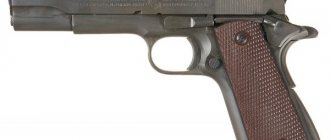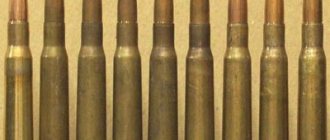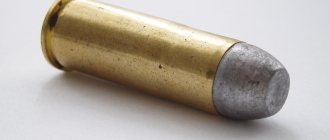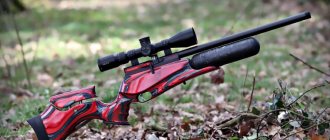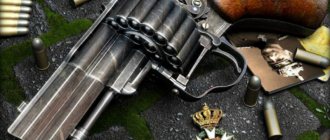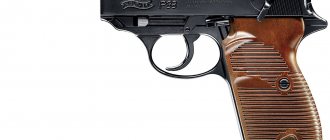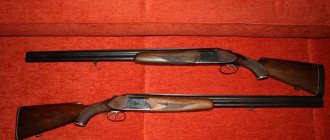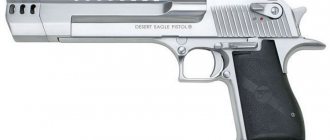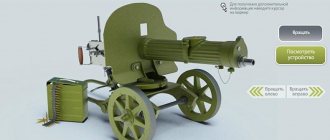American firearms designer
For other people named John Browning, see John Browning (disambiguation).
| This article requires additional links for verification . |
| John Moses BrowningBOL | |
| Browning, c. 1915 | |
| Born | John Moses Browning Born January 23, 1855 (1855-01-23) Ogden, Utah Territory |
| Died | 26 November 1926(1926-11-26) (age 71) Liege, Belgium |
| Nationality | American |
| Class | Gunsmith, founder of Browning Arms Company |
| Spouse(s) | Rachel Teresa Child Browning |
| Children | 10, including Val A. Browning |
| Parents |
|
| Awards | John Scott Medal (1905) Order of Leopold (1914) |
| Signature | |
John Moses Browning
(January 23, 1855 [1] – November 26, 1926) was an American firearms designer who developed many varieties of military and civilian firearms, cartridges, and gun mechanisms, many of which are still in use throughout the world. [2] He made his first firearm at age 13 in his father's gun shop and on October 7, 1879, at age 24, received the first of 128 firearms patents. [3] He is considered one of the most successful. firearms designers of the 19th and 20th centuries and pioneers in the development of modern automatic and semi-automatic firearms. [4]
Browning influenced virtually every category of firearm. He invented or greatly improved single-shot, lever-action, and pump-action rifles and shotguns. Perhaps his most significant contribution was in the field of self-loading firearms. He developed the first reliable and compact self-loading pistols, inventing the telescopic bolt, and then integrating the bolt and barrel shroud into what was known as a pistol bolt. The Browning telescopic bolt design is now found on almost every modern semi-automatic pistol, as well as several modern fully automatic weapons. He also developed the first gas-powered firearm, the Colt-Browning Model 1895 machine gun—a system that surpassed mechanical recoil operation to become the standard for most high-power semiautomatic weapon designs around the world. He also made significant contributions to the development of the automatic cannon.
Browning's most successful designs include the M1911 pistol, the M1917 water-cooled pistol, the M1919 air-cooled and M2 heavy machine gun, the Browning Automatic Rifle (BAR OR BAR), and the Browning Auto-5, the first semi-automatic shotgun. . Some of these guns are still in production, often with minor changes in parts and cosmetics from those assembled by Browning or his licensees. His weapon is one of the most copied firearms in the world.
Life and work[edit]
Browning Brothers Gun Shop, Ogden, Utah Territory, 1882. From left to right: Thomas Samuel Browning, George Emmett Browning, John Moses Browning, Matthew Sandefur Browning, Jonathan Edmund Browning, and Frank Rushton
His father, Jonathan Browning—who was among the thousands of pioneers in the Church of Jesus Christ of Latter-day Saints who made the exodus from Nauvoo, Illinois, to Utah—established a gunsmith's shop in Ogden in 1852, as was common in the latter days In the Holy Day community, Jonathan Browning was a polygamist and married three wives. He fathered 22 children, including John Moses Browning, and raised two stepdaughters with his wife, Elizabeth Caroline Clark. [5]
John Moses worked in his father's Ogden store from the age of seven, where he was taught the basics of design and manufacturing and encouraged to experiment with new concepts. There he developed his first rifle, a single-shot falling block design, then, in 1878, in partnership with his younger brother, he co-founded the John Moses and Matthew Sandefur Browning Company, later renamed the Browning Arms Company, and began producing this rifle . and other non-military firearms. By 1882, John and Matthew's half-brothers Jonathan (1859-1939), Thomas (1860-1943), William (1862-1919) and George (1866-1948) were working at the company.
Like his father, Browning was a member of the Church of Jesus Christ of Latter-day Saints and served a two-year mission in Georgia beginning March 28, 1887.[6]
He married Rachel Teresa Child (September 14, 1860 – September 30, 1934) on April 10, 1879 in Ogden, Weber County, Utah Territory, and the couple had 10 children, two of whom died in infancy. [7]
Firearm designs[edit]
Production samples of the Model 1885 single-shot rifle attracted the attention of the Winchester Repeating Arms Company, which sent a representative to evaluate the competition. Winchester bought the design for $8,000 and moved production to his factory in Connecticut. From 1883, Browning worked in partnership with Winchester and developed a series of rifles and shotguns, most notably the Winchester Model 1887 lever-action shotgun and Model 1897 pump-action shotgun, the Model 1885 single-shot falling block shotgun, and the Model 1886 lever action shotgun, Model 1892, Model 1894. Model 1895 rifle, as well as the Remington Model 8 long-recoil semi-automatic rifle. Many models are still in production today in some form; As of 1983, more than six million Model 1894 rifles had been produced, more than any other sporting rifle in history. [8]
Winchester produced several popular small arms designed by John M. Browning. For decades in the late 19th and early 20th centuries, Browning patterns and Winchester firearms were synonymous, and their partnership was very successful. This came to an end when Browning proposed a new long recoil operated semi-automatic shotgun, the prototype of which was completed in 1898, to Winchester management, which eventually became the Browning Auto-5 shotgun. As was the custom of the time, Browning's earlier designs were licensed exclusively to Winchester (and other manufacturers) for a one-time fee. With this new product, Browning introduced a rolling royalty in his negotiations based on unit sales rather than a one-time pre-order payment. If the new gun becomes very successful, Browning should receive significantly more income than previous licensing fee arrangements. Winchester management was unhappy with the bold change in their relationship and rejected Browning's proposal. Remington Arms was also approached, however Remington's president died of a heart attack as Browning waited to offer them the pistol. This forced Browning to look overseas to produce the shotgun. Anyway; Remington would later produce a copy of the Auto-5 as the Model 11, which was used by the US military and was also sold to the civilian market.
Following recent successful firearms license negotiations with Fabrique Nationale de Herstal of Belgium (FN), Browning provided FN with a new shotgun design; The proposal was accepted, and FN produced a new gun called the Browning Auto-5 in honor of its inventor. The Browning Auto-5 was continuously produced as a very popular shotgun throughout the 20th century. In response, Winchester abandoned John Browning's designs when it adopted Thomas Crossley Johnson's shotgun design for the new Winchester Model 1911 SL (Johnson had to work around Browning's patents for what became the Auto-5) and the new Model 1912 pump-action shotgun, which was based in part on design features of the earlier Winchester Model 1897, designed by Browning. shotgun. This shift marked the end of the era of Winchester-Browning collaboration.
Further work and life[edit]
Browning in his later years
John Browning was known as a dedicated and tireless innovator and experimenter who sought breakthrough, consumer-oriented features, performance and reliability improvements in small arms design. He did not retire from his career in later years, but devoted his entire adult life—literally until his last day—to these pursuits. On November 26, 1926, while working on a workbench on the design of a self-loading pistol for the Fabrique Nationale de Herstal (FN) in Liège, he died of heart failure in the design studio of his son Val A. Browning. Even the 9mm semi-automatic pistol he was working on when he died had great design merits and was eventually completed in 1935 by Belgian designer Dieudon Save. Released as the Fabrique Nationale GP35, it was better known as the successful Browning Hi pistol. -Power, beloved by athletes and gun collectors, as well as many military and law enforcement agencies around the world.
Browning's premium-priced overlay shotgun, an over-under shotgun design, was his last completed firearm design. It was originally sold with dual triggers; The single trigger modification was later completed by his son Val Browning. Commercially introduced in 1931 by FN, Browning overlay shotguns, as well as their more affordable cousins, the Browning Citori are made in Asia, are still produced in the 21st century, and come with a variety of fine hand-engraved grades and premium quality woods.
Throughout his life, Browning designed a vast array of military and civilian small arms for his own company, as well as for Winchester, Colt, Remington, Savage, Stevens, and Fabrique Nationale de Herstal of Belgium. Browning firearms are manufactured both licensed and unlicensed in hundreds of factories around the world. Browning Arms was founded in 1927, a year after Browning's death on November 26, 1926, in Liege, Belgium. In 1977, the company was acquired by FN Herstal.
Legacy[edit]
The M1895 machine gun saw action in the Spanish-American War with the United States Marine Corps. The Colt M1911, Browning 1917/19 and BAR saw action with US forces in World War I, World War II, and the Korean War. The M1911 continued to serve as the standard US combat weapon until 1986; The variant is still used by special operations units of the United States Marine Corps and the design remains very popular among civilian shooters and some police departments. The Browning Hi-Power saw an equally long period of military service outside the United States and remains the standard issue weapon of the Australian and Canadian forces. The M2 Browning .50 caliber machine gun—the rugged “Ma Deuce”—was developed in 1918, entered service with the U.S. military in 1921, and has been in active service in various militaries around the world for over a century. roles. The M4 37 mm autocannon was originally developed by Browning in 1921 and entered service in 1938; it was used on both aircraft and boats by the US Navy during World War II.
Excerpt describing Browning, John Moses
Natasha would be able to tell the old countess alone in bed at night everything that she thought. Sonya, she knew, with her stern and integral gaze, either would not have understood anything, or would have been horrified by her confession. Natasha, alone with herself, tried to resolve what was tormenting her. “Did I die for the love of Prince Andrei or not? she asked herself and with a reassuring smile answered herself: What kind of fool am I that I ask this? What happened to me? Nothing. I didn't do anything, I didn't do anything to cause this. No one will know, and I will never see him again, she told herself. It became clear that nothing had happened, that there was nothing to repent of, that Prince Andrei could love me just like that. But what kind? Oh God, my God! Why isn’t he here?” Natasha calmed down for a moment, but then again some instinct told her that although all this was true and although nothing had happened, instinct told her that all the former purity of her love for Prince Andrey had perished. And again in her imagination she repeated her entire conversation with Kuragin and imagined the face, gestures and gentle smile of this handsome and brave man, while he shook her hand. Anatol Kuragin lived in Moscow because his father sent him away from St. Petersburg, where he lived more than twenty thousand a year in money and the same amount in debts that creditors demanded from his father. The father announced to his son that he was paying half of his debts for the last time; but only so that he would go to Moscow to the post of adjutant to the commander-in-chief, which he procured for him, and would finally try to make a good match there. He pointed him to Princess Marya and Julie Karagina. Anatole agreed and went to Moscow, where he stayed with Pierre. Pierre accepted Anatole reluctantly at first, but then got used to him, sometimes went with him on his carousings and, under the pretext of a loan, gave him money. Anatole, as Shinshin rightly said about him, since he arrived in Moscow, drove all the Moscow ladies crazy, especially because he neglected them and obviously preferred gypsies and French actresses to them, with the head of which, Mademoiselle Georges, as they said, he was in intimate relations. He did not miss a single revelry with Danilov and other merry fellows of Moscow, drank all night long, outdrinking everyone, and attended all the evenings and balls of high society. They talked about several of his intrigues with Moscow ladies, and at balls he courted some. But he did not get close to girls, especially rich brides, who for the most part were all bad, especially since Anatole, which no one knew except his closest friends, had been married two years ago. Two years ago, while his regiment was stationed in Poland, a poor Polish landowner forced Anatole to marry his daughter. Anatole very soon abandoned his wife and, for the money that he agreed to send to his father-in-law, he negotiated for himself the right to be considered a single man.
Products [edit]
Some Browning models are still in production. Some of his most notable works include:
Cartridges[edit]
- .25 ACP
- .32 ACP
- .38 ACP
- .380 ACP
- .45 ACP
- .50 BMG
- 9mm Browning long
Firearms[edit]
Pistols[edit]
- FN M1899/M1900 (.32 ACP)
- Colt Model 1900 (.38 ACP)
- Colt Model 1902 (.38 ACP)
- Colt Model 1903 Pocket Hammer (.38 ACP)
- FN Model 1903 (9 mm Browning Long)
- Colt Model 1903 Pocket Hammerless (.32 ACP)
- FN Model 1906 Vest Pocket (.25 ACP)
- Colt Model 1908 (.25 ACP) vest pocket
- Colt Model 1908 Pocket Hammerless (.380 ACP)
- FN Model 1910 (.32 ACP, .380 ACP)
- FN Models 1922 (.32 ACP) and (.380 ACP)
- American M1911 pistol (.45 ACP)
- Browning Hi-Power (9mm parabellum)
- Colt Woodsman pistol (.22 LR)
Shotguns [edit]
- Savage Model 720 Long Recoil Semi-Automatic Shotgun
- Ithaca Model 37 pump action repeater shotgun
- Stevens Model 520/620 pump action repeater shotgun
- Winchester Model 1887 lever action repeater shotgun
- Winchester Model 1893 pump-action shotgun with cartridge caliber
- Winchester Model 1897 pump-action shotgun
- Winchester Model 1912 pump-action shotgun
- Browning Auto-5 semi-automatic long recoil shotgun
- Browning shotgun Superposed over/under
- Remington Model 17 pump-action repeating shotgun
Rifles [edit]
- Winchester Model 1885 Single Shot Falling Block Rifle
- Winchester Model 1886 Lever Repeating Carbine
- Winchester Model 1890 repeating carbine (.22 LR)
- Winchester Model 1892 Lever Repeating Carbine
- Winchester Model 1894 Lever Repeating Carbine
- Winchester Model 1895 Lever Repeating Carbine
- Winchester Model 1900 single-shot bolt-action rifle (.22 LR)
- Remington Model 8 semi-automatic rifle
- Browning 22 semi-automatic rifle (.22 LR)
- Remington Model 24 semi-automatic rifle (.22 LR)
- FN Trombone pump action rifle (.22 LR)
Machine guns [edit]
- American air-cooled M1895 gas machine gun
- American M1917 water-cooled machine gun with recoil
- American M1919 air-cooled machine gun with recoil
- Browning automatic rifle (USA) M1918 (USA)
- American M2 .50 caliber heavy machine gun.
- 37 mm US M4 automatic cannon
military weapon
The Colt 1911, Browning 1917, and BAR saw action in World War I, World War II, and the Korean War, and the M1911 pistol was in service with the U.S. Army until 1986; a variant is still used by United States Marine Corps Special Operations units, and the design is very popular among marksmen and civilian athletes. The Browning Hi-Power may have a similar service life and remains a service weapon in the armed forces of Australia, Canada, the UK and Argentina, to name a few. The Browning M2 heavy machine gun remains in widespread use throughout the world.
Selected patents[edit]
- U.S. Patent 220,271 Winchester 1885 single-shot rifle, Browning's first patent
- US Patent 306,577 Winchester 1886 and Model 71 Lever Action Rifles
- US Patent 336287 Winchester Model 1887/1901 lever action shotgun.
- US Patent 385,238 Winchester 1890 pump action shotgun
- US Patent 441390 Winchester 1893 and 1897 pump action shotguns.
- US Patent 465,339 Winchester 1892 with lever mechanism.
- US Patent 524702 Winchester 1894 with lever mechanism.
- US Patent 544657 Colt-Browning Model 1895 machine gun
- US Patent 549345 Winchester 1895 with lever mechanism.
- US Patent 580924 Colt 1900 automatic pistol
- U.S. Patent 632,094 Winchester 1900, single shot, .22 cal.
- U.S. Patent 689,283 Browning Auto-5 shotguns, as well as Remington Model 11 and Savage 720
- US Patent 659,786 Remington Model 8 semi-automatic rifle
- US Patent 678937 M1917 Browning machine gun
- US Patent 747,585 Colt Model 1903 Pocket Hammerless automatic pistol
- In US Patent 781765 to US Patent 864609 Stevens 520 pump action shotgun
- US Patent 808003 Colt Model 1905 in .45 ACP (predecessor to M1911)
- US Patent 947,478 FN Model 1906 and Colt Model 1908 Vest Pocket in .25 ACP
- US Patent 984519 Colt 1911
- U.S. Patent 1,065,341 Browning 22 semi-automatic rifle and Remington Model 24.
- In US Patent 1143170 Remington Model 17 and So 37 pump action shotguns
- US Patent 1,276,716 Colt Woodsman
- US Patent 1,293,022, Browning Automatic Rifle Model, 1918
- US Patent 1,424,553 FN "Trombone", .22 caliber pump-action repeater (Rarity in the USA).
- US Patent 1525065 37 mm automatic cannons, M1 and M4
- US Patent 1,578,638, Browning Superposed over/under shotgun
- US Patent 1618510 FN and Browning Hi-Power pistol
- US Patent 1628226 M2 Browning machine gun in .50 BMG
Links[edit]
- Pelley, Doug (July 2004). "Tombstone Images: John M. Browning". Dapcom. Archived from the original on February 5, 2007. Retrieved January 23, 2007.
- Borth, Christy (1945). Masters of mass production. Indianapolis: Bobbs-Merrill Company. pp. 152, 156–9. OCLC 609185692.
- Rattenbury, Richard S. "John Moses Browning". Encyclopedia Britannica
. Encyclopædia Britannica, Inc. Archived from the original on July 26, 2008. Retrieved September 22, 2022. CS1 maint: discouraged parameter (link) - "The Browning Firearms Collection" (PDF). American Society of Mechanical Engineers. November 18, 1989. Archived from the original (PDF) on November 20, 2012. By 1900, more than 75% of the duplicate sporting guns on the U.S. market, both lever action and pump action, were invented by John.
- ↑
browning.com. Archived September 5, 2022, at the Wayback Machine "In honor of the parents of the 'father of modern firearms'." Retrieved September 5, 2022. - "Early Mormon Missionaries: John Moses Browning".
- Browning Archived September 22, 2022, at the Wayback Machine "Honoring the 'Father of Browning Company'", Browning.com. Retrieved September 22, 2022.
- Jump up
↑ Wallack, L.R.
"Sixty million guns." 1983. In Gun Digest Treasury
, Harold A. Murtz, editor of DBI Books. 1994 p.190 ISBN 0873491564
References
- Encyclopedia Britannica
Online, "John Moses Browning" (broken link available at Internet Archive; see history, first and last versions). . - Pelley, Doug (2004-07). "Tombstone Pictures: John M. Browning". Retrieved January 23, 2007.
- Belfield, Richard. Murder Case: A History of
-
Sponsored
, Carroll & Graf Publishers: New York. ISBN 0-7867-1343-7 page 237 - Connolly, Kate (21 June 2004). Found: The Gun That Shook the World. Telegraph. Retrieved January 23, 2007.
- Browning, John and Curt Gentry. John M. Browning, American gunsmith.
New York: Doubleday, 1964. OCLC 1329440.
Fountain
- This work contains a derivative translation of "John Browning" from the English Wikipedia, released by its publishers under the terms of the GNU Free Documentation License and the Creative Commons Attribution-ShareAlike 3.0 Unported License.
